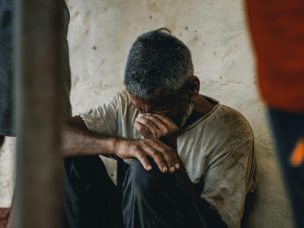Implementing evidence-based strategies for suicide prevention among Black males would help achieve mental health equity.
Suicide is currently the third leading cause of death among Black males. The rate of suicide has risen in this population despite decreasing suicide rates in the US in recent decades. Identifying specific suicide risk factors is necessary to avert this public health crisis. Despite this, insufficient data is available to investigate the alarming trends in BFlack male suicide conclusively.
A study published in the journal Frontiers in Public Health has highlighted the gaps in existing research on this subject and presented useful recommendations, providing the opportunity for implementing culturally responsive strategies of intervention and suicide prevention in this population.
Research Gaps in Understanding Black Male Suicide Prevention
Most research concerning suicide is conducted in populations of European descent. When Black males are included in such research, their numbers are small compared to White individuals. The results are then generalized to Black Americans without consideration for gender and socio-cultural differences.
Another important aspect is identifying and tackling the multi-level exposures of racism to prevent suicide in Black males. Racialized populations have shorter life spans and poorer health than advantaged populations.
Recommendations to Achieve Equity in Black Male Suicide Prevention
- Prioritize Population-Focused Strategies and Funding
The scarcity of available literature on Black male suicide prevention highlights the need for more research to determine the risk and protective factors associated with suicide among Black males. Additionally, it is observed that Black researchers inclined to address such topics are less likely to receive funding from federal organizations. Addressing these issues would help researchers, policymakers, and other major stakeholders establish culturally informed preventive strategies. - Incorporate Innovative Methods to Maintain Continuity of Care
Black males are often unable to follow up after initially availing of emergency suicide services, which calls attention to the need for continuity of care after being discharged from the hospital for a mental health crisis. Smartphone-based technologies could provide a convenient method to enhance therapeutic support and continuity of care after discharge. - Acknowledge the Heterogeneity of Black Males in Research
Research sampling should account for the heterogeneity among Black Americans by incorporating the diverse African diasporic communities. Researchers should also consider including validated measures of racism and other indicators of structural disadvantage in future data collection.
- Utilize Crisis Support Hotlines and Safety Planning
Suicide and crisis lifeline services should diversify their workforces to meet the needs of Black males. Safety planning interventions should appoint trained mental health counselors and avoid immediate police or criminal justice involvement in outreach for a mental health crisis. - Place Stakeholders at the Forefront of Suicide Prevention
Placing community leaders at the frontlines of Black male suicide prevention is critical for strengthening trust in prevention strategies and reducing the cultural stigma related to seeking mental health services.
Source
Adams, L. B., & Thorpe, R. J. (2023). Achieving mental health equity in Black male suicide prevention. Frontiers in Public Health, 11. https://doi.org/10.3389/fpubh.2023.1113222









